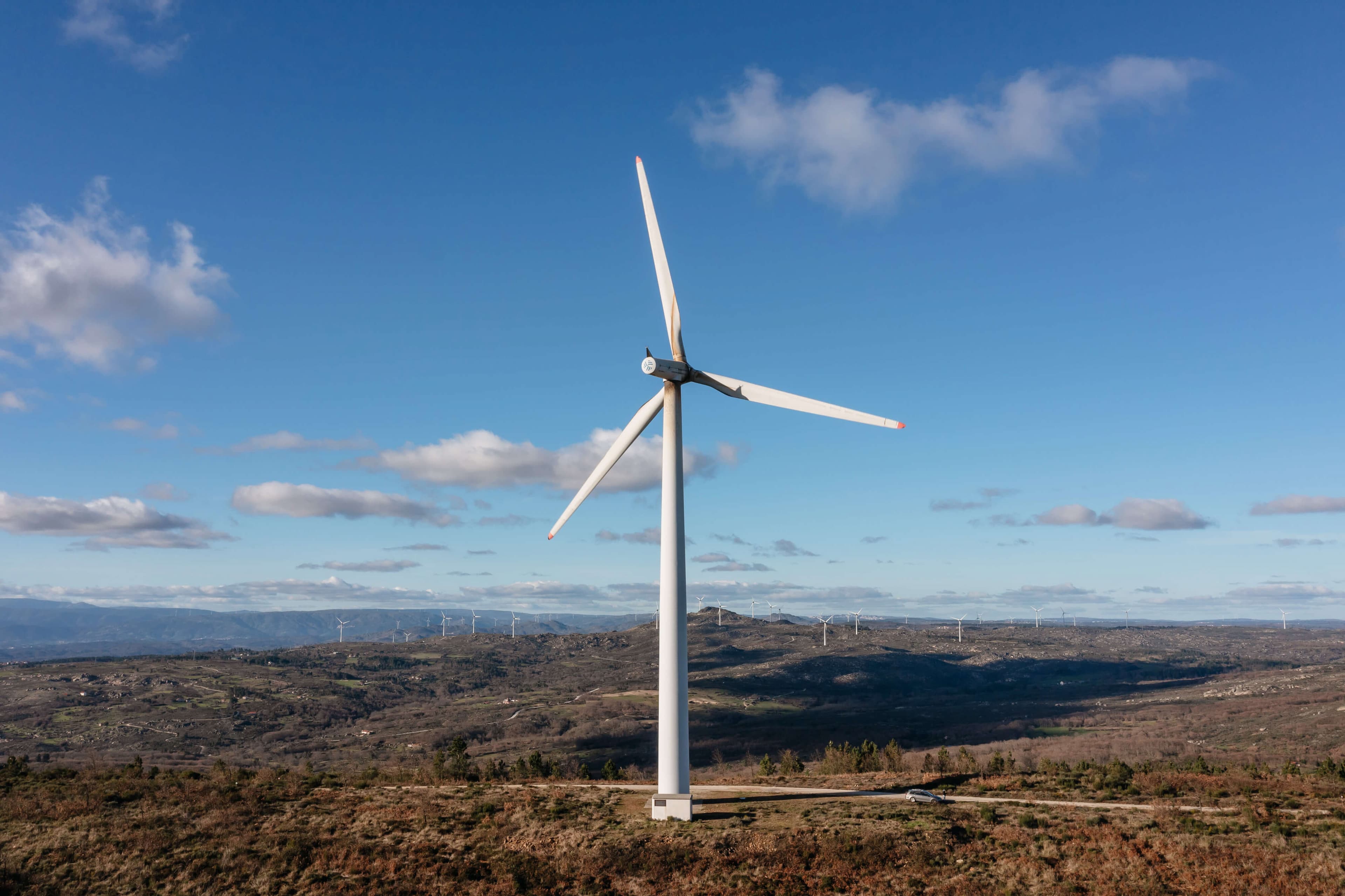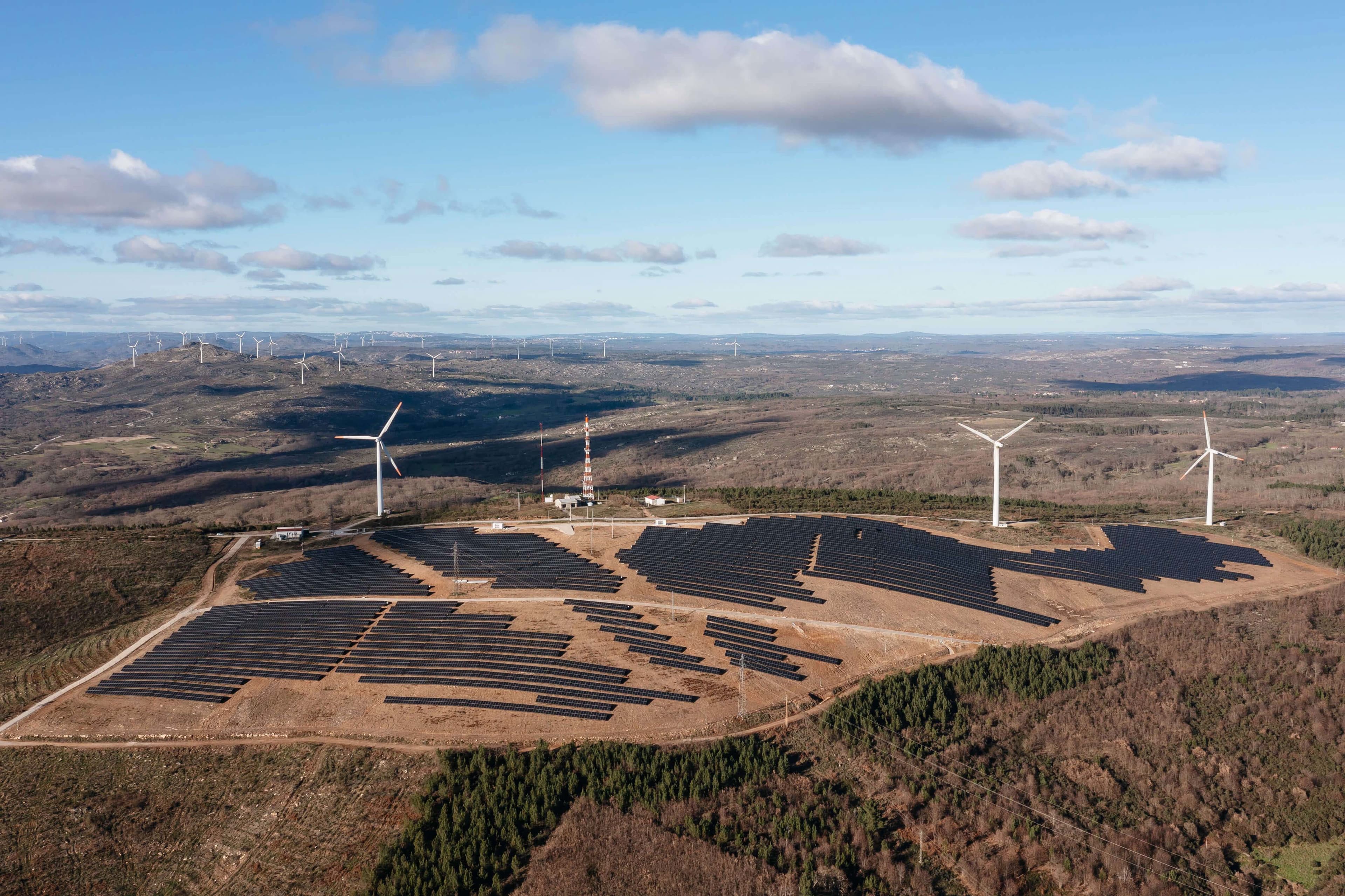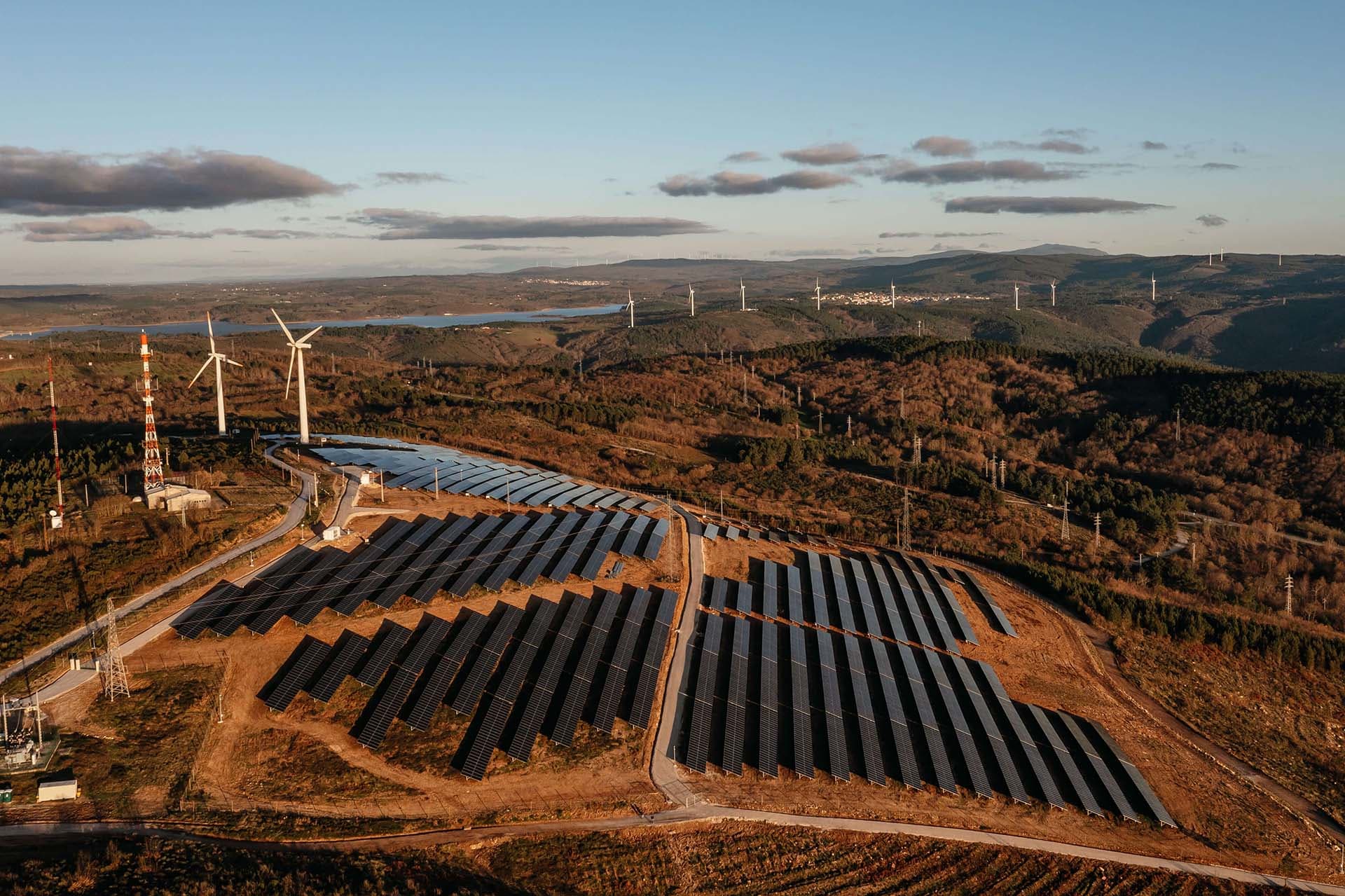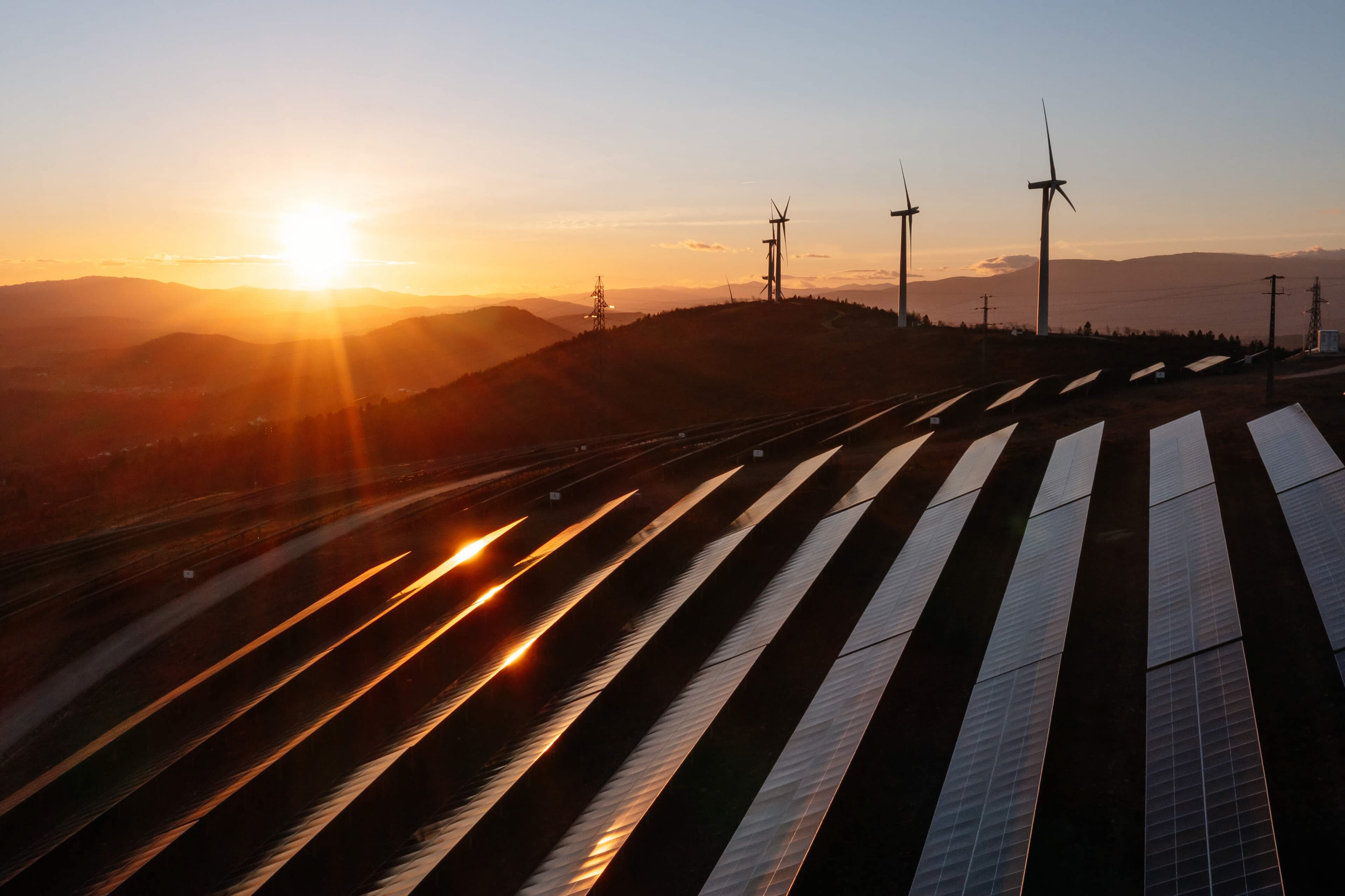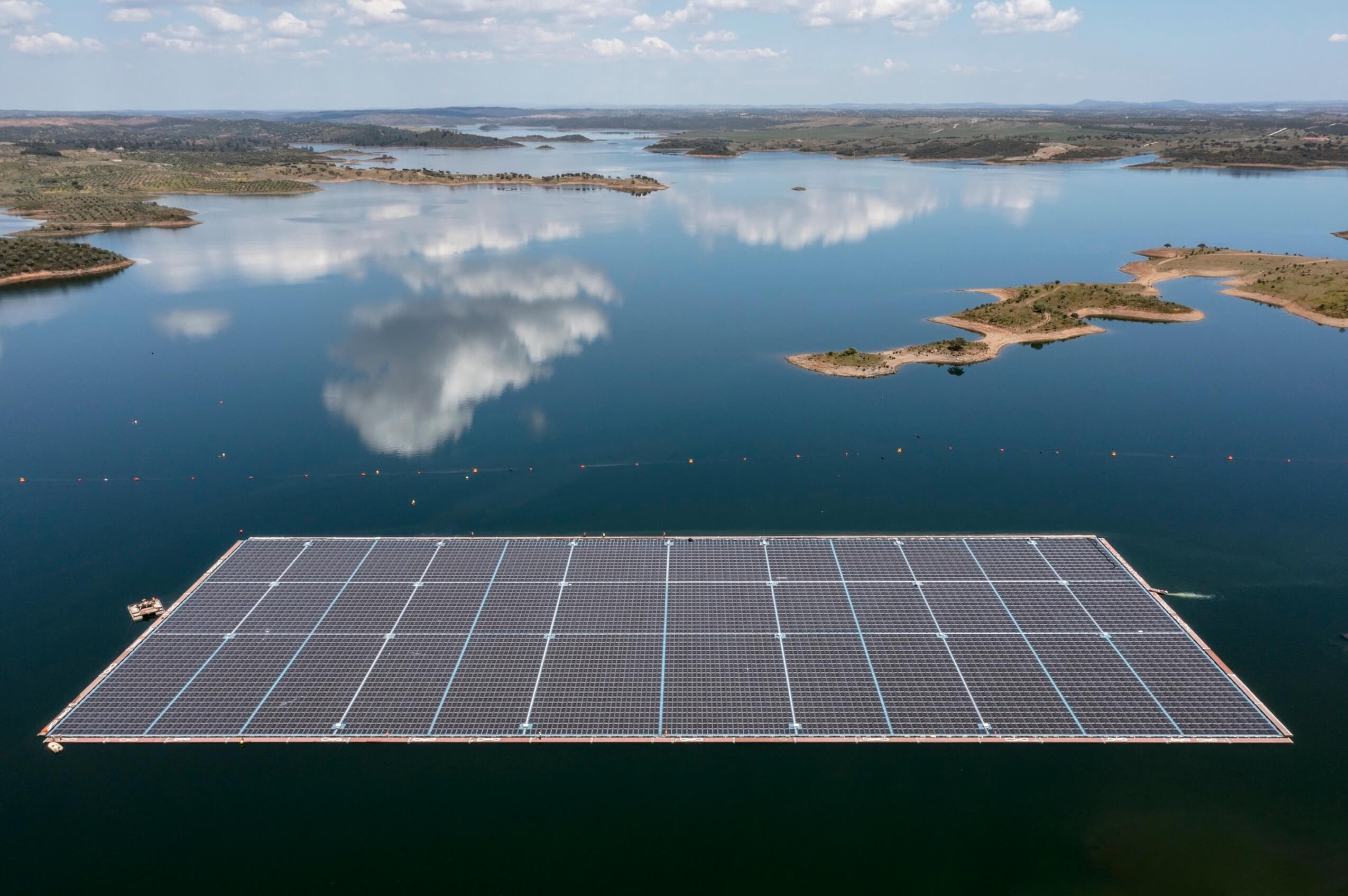An important experiment is taking place in the sparsely populated hills of the Portuguese interior. In the rural municipality of Sabugal, Guarda, between the Serra da Malcata nature reserve and Serra da Estrela natural park, EDP Renewables (EDPR), part of the global energy company EDP, is bringing together two of the energy transition’s most important technologies: wind and solar.
EDPR hopes this hybrid approach to renewable energy development will help overcome permitting and space availability problems and allow more clean electricity to be produced in sites across the world.
This photo essay looks at the benefits of the hybrid approach, and why it could become a standard for renewable energy plant development in the future.
THE NEED FOR SCALE
An important challenge for renewable energy developers such as EDPR is how to scale projects fast enough. Despite around three decades of growth in wind and solar power, the contribution that these technologies make to global energy consumption is still low.
In 2021, solar energy accounted for less than 0.7 per cent of the world’s primary energy consumption, while wind met less than 1.2 per cent of demand. Coal, oil and gas, all fossil fuels that contribute to climate change, accounted for almost 86 per cent.
These fossil fuels must almost fully disappear from the global energy mix by 2050 if society is to meet the decarbonisation goals laid out in the Paris Agreement. Much of the energy they provide will need to come from wind and solar instead. So how can developers increase the pace of wind and solar installation?
The issue is not cost. Wind is now one of the cheapest sources of electricity on the planet, with a levelised cost of energy (LCOE) equivalent to as little as $26 per megawatt hour, according to investment bank Lazard. This compares to a minimum LCOE of $45 per MWh for gas and $65 for coal.
Solar energy also is cheaper than fossil fuels, with an LCOE of as little as $30 per MWh, according to Lazard’s analysis. The technology has benefited from massive manufacturing scale and technical advances such as bifacial panels, which produce energy from both the top and bottom of each panel.
Rather than cost, the biggest barrier to renewables deployment today is permitting. Getting the permits and licences needed for a wind park or solar farm can take months, if not years.
HYBRID VIGOUR
While lawmakers in Europe and elsewhere struggle with how to cut red tape, one option for companies such as EDPR is to create hybrid plants: ones where wind, solar and other energy assets share space, grid connections, planning permits and so on.
EDPR has tried this approach for the first time at Sabugal, combining its 10.9MW Mosteiro wind farm with its new 9MWp Mina de Orgueirel solar park. Together, the projects are expected to generate 39.5 gigawatt hours of clean energy per year, enough to supply a town of 30,000.
“A hybrid hub leverages the already developed infrastructures, and increases the clean energy production in them,” says Duarte Bello, Chief Operating Officer of EDPR Europe and Latin America.
“This approach allows us to have a faster implementation of renewables, because by using existing infrastructure we are less dependent on waiting for new interconnection availability, which currently is a major bottleneck for these projects in Europe.”
The hybrid approach also helps maximise the use of the grid connection, because wind power can export energy at night while solar panels can produce electricity on calm days.
“If we take wind and solar energy combined in regions where there’s a significant number of sunlight hours as well as strong winds, such as the Iberian Peninsula, we can in some cases almost double capacity versus using a single technology,” Bello says.
A GROWING TREND
Combining solar with wind is an obvious way to improve renewable production but it is far from the only formula. “When we talk about hybridisation, we are simply referring to combining different clean technologies using the same infrastructure,” Bello says.
This could mean adding a solar plant to an existing wind farm or placing floating photovoltaic panels on a reservoir near a hydroelectric dam. “These types of green energy together create a space where the different technologies are co-working and maximising output,” says Bello.
“Adding battery storage to existing renewables facilities is also commonly considered as hybridisation,” he says. In 2022, EDP inaugurated Alqueva, the biggest floating park in a European reservoir, and is also implementing hybrid projects with batteries in other countries including Romania.
Whatever the combination, the number of hybrid plants is on the rise. EDP has 1.6GW of hybrid projects scheduled for development in the Iberian Peninsula alone. This year, the company will build its second hybrid project in Portugal, adding 18MW, and, says Bello. “In Spain we have already started building three projects.”
By the end of the decade, EDPR expects to have installed around 750MW of hybrid renewable energy capacity in Portugal. In Spain, the company plans to add 650MW to the 50MW of hybrid capacity already under development.
The Spanish projects are notable because EDPR is using hybridisation to speed up development of projects won under government auctions in January 2022. The company won more than 98MW of solar capacity across five projects, and four of these will be developed on existing wind farms to avoid the need for new grid connections.
“This will be a reality in all countries in the future, and we are already actively developing projects in North America, Latin America and other regions in Europe, such as Poland, Italy and Greece,” Bello says.
“Hybrid projects maximise the usage of grid infrastructure and production of renewable energy, helping us overcome some of the hurdles of intermittency – thus accelerating the energy transition we are all working for.”

